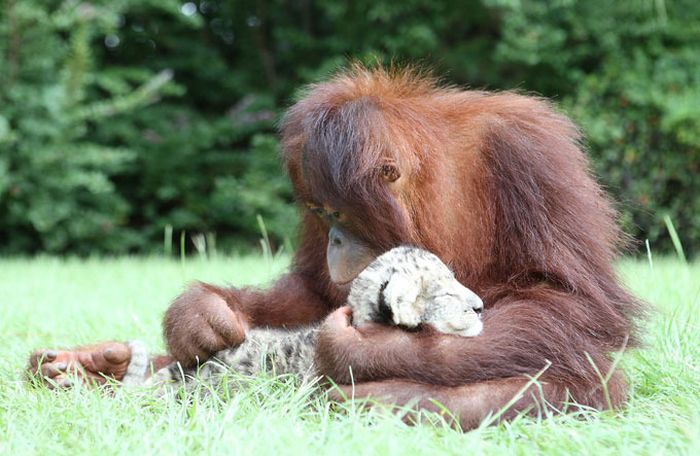|
|
Two Lion Cubs With Monkey
|
Extensive statistics collected over various studies show that lions normally feed on mammals in the range 190–550 kg (420–1210 lb). In Africa, wildebeest rank at the top of preferred prey (making nearly half of the lion prey in the Serengeti) followed by zebra. Most adult hippopotamuses, rhinoceroses, elephants, and smaller gazelles, impala, and other agile antelopes are generally excluded. However giraffes and buffalos are often taken in certain regions. For instance, in Kruger National Park, giraffes are regularly hunted. In Manyara Park, Cape buffaloes constitute as much as 62% of the lion's diet, due to the high number density of buffaloes. Occasionally hippopotamus is also taken, but adult rhinoceroses are generally avoided. Even though smaller than 190 kg (420 lb), warthogs are often taken depending on availability. In some areas, they specialise in hunting atypical prey species; this is the case at the Savuti river, where they prey on elephants. Park guides in the area reported that the lions, driven by extreme hunger, started taking down baby elephants, and then moved on to adolescents and, occasionally, fully grown adults during the night when elephants' vision is poor. Lions also attack domestic livestock; in India cattle contribute significantly to their diet. They are capable of killing other predators such as leopards, cheetahs, hyenas, and wild dogs, though (unlike most felids) they seldom devour the competitors after killing them. They also scavenge animals either dead from natural causes (disease) or killed by other predators, and keep a constant lookout for circling vultures, being keenly aware that they indicate an animal dead or in distress. A lion may gorge itself and eat up to 30 kg (66 lb) in one sitting; if it is unable to consume all the kill it will rest for a few hours before consuming more. On a hot day, the pride may retreat to shade leaving a male or two to stand guard. An adult lioness requires an average of about 5 kg (11 lb) of meat per day, a male about 7 kg (15.4 lb).
Because lionesses hunt in open spaces where they are easily seen by their prey, cooperative hunting increases the likelihood of a successful hunt; this is especially true with larger species. Teamwork also enables them to defend their kills more easily against other large predators such as hyenas, which may be attracted by vultures from kilometers away in open savannas. Lionesses do most of the hunting; males attached to prides do not usually participate in hunting, except in the case of larger quarry such as giraffe and buffalo. In typical hunts, each lioness has a favored position in the group, either stalking prey on the "wing" then attacking, or moving a smaller distance in the centre of the group and capturing prey in flight from other lionesses.
Young lions first display stalking behavior around three months of age, although they do not participate in hunting until they are almost a year old. They begin to hunt effectively when nearing the age of two.
|
|









